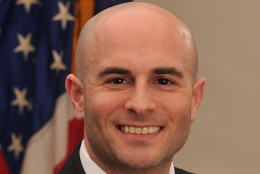Hubbard Radio Washington DC, LLC. All rights reserved. This website is not intended for users located within the European Economic Area.
On Air: Federal News Network
interoperability
-
The National Coordinator for Health Information Technology recently published proposed new standards for electronic health records to work together. The interoperability standards are open now for public comment. Steve Posnack, director of Standards and Technology in the coordinator's office, joins Federal Drive with Tom Temin with more.
October 05, 2016 -
Democratic presidential candidate Hillary Clinton is pushing for better integration and communication between the VA and Defense Department in her veterans policy plan. She proposes restructuring the Veterans Health Administration but specifically opposes efforts to privatize VA health care.
July 28, 2016 -
When U.S. military forces engage, they're usually working in concert with allies. The more entities that are involved and the more communications channels there are, the greater the chances they'll run into blackages. It's called interoperability — or a lack thereof. Joel Dolisy, the CIO of network analysis company Solarwinds, has come up with a three-point action plan for boosting military communications interoperability. Federal Drive with Tom Temin asked him, what are some of the challenges they're facing now?
January 15, 2016 -
Industry stakeholders told the Government Accountability Office they are concerned about global interoperability with the Next Generation Air Transportation Systems and how modernization efforts around the world have been hampered due to constrained resources.
September 10, 2015 -
The Defense and Veterans Affairs departments are a long way from deploying new electronic health record systems that can communicate with each other. Both agencies didn't meet a deadline last year to make sure their data complies with national standards. Valerie Melvin is director of information management and technology resources issues at GAO. She tells In Depth with Francis Rose why defined goals would help both departments better measure their progress.
August 18, 2015 -
The National Institute of Standards and Technology brought agency and industry experts to its Gaithersburg headquarters to discuss cloud computing this week. Federal News Radio's Lauren Larson was there. She spoke with NIST Cloud Technical Program Manager Robert Bohn about the key word of the event — interoperability. Read Lauren's related story.
March 25, 2014 -
Dr. Theresa Cullen, chief medical informatics officer at the Veterans Health Administration, leads the program that allows the departments of Defense and Veterans Affairs to share data to improve the quality of health care they provide.
November 14, 2013 -
Doctor Doug Fridsma, chief science officer for HHS's Office of the National Coordinator for Health Information Technology, will discuss how interoperability will make it easier to share health information. April 2, 2013
April 02, 2013 -
Mario Hyland from AEGIS.net will talk about exchanging information between medical systems. July 31, 2012(Encore presentation August 28, 2012)
July 31, 2012 -
World IPv6 Day means the Internet is being tested for readiness. The Interoperability Laboratory\'s Tim Winters explains how - and why!
June 08, 2011 -
Agency awarded spots on the $5 billion technology services deal to 30 companies, including 15 small businesses. The contract is open to state and local governments, which receive grants from CDC. The goal is to promote standards and interoperability to share public health information.
October 21, 2010 -
NIST says it\'s identified five \"foundational\" sets of standards for Smart Grid interoperability and cyber security that are ready for consideration by federal and state energy regulators. Details from NIST\'s George Arnold
October 13, 2010 -
Legislation authorizes critical management functions and programs within S&T, including the Securing the Cities program and authorizing the National Urban Security Technology Laboratory (NUSTL). Rep. Yvette Clarke explains.
April 26, 2010 -
Delays in the processing time of claims at the Department of Veteran’s Affairs triggered the creation of a new electronic health record. But the House Veterans Affairs Subcommittee on Oversight and Investigations wants to know…
July 16, 2009











